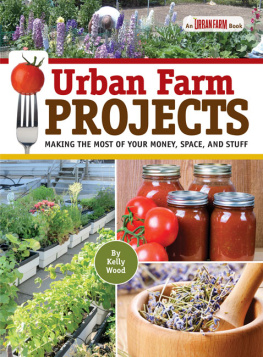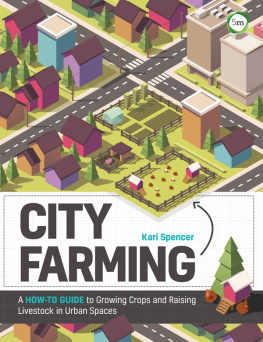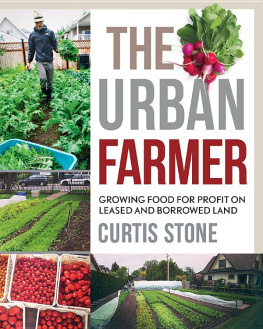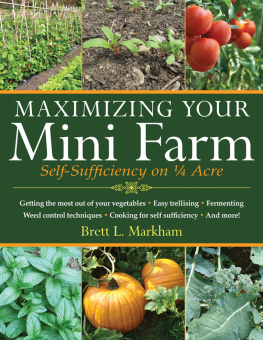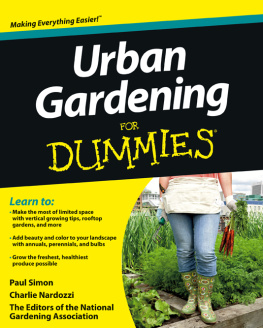Dedication
To my mother, whose beautiful Belgian hands will always be my image of absolute capability; to my father, for teaching me that persistence and determination are omnipotent; and to Roger, my love and best friend, for letting me.
Project 6: Small-Scale Beer Brewing
Why would you want to do this? Small-batch, hand-crafted beer has distinct flavors, and it tastes so much better than many store-bought beers. Beer makes a great gift, and brewing can become a fun, rewarding hobby.
Why wouldnt you want to do this? You dont drink beer, or you dont like beer with interesting or complex flavors.
Is there an easier way? You can use extracts (instead of whole grains), available at home-brew stores or from online suppliers, but most are formulated for a full 5 gallons. Beer brewed with extracts tastes very different than that made from whole grains, but using extracts can cut out a bunch of steps (similar to using a mix to make pancakes).
Cost comparison: The price per pint is minimal compared with the price of bottled or pub brews.
Skills needed: This is pretty easy for the person who knows his or her way around a kitchen. Some knowledge or understanding of brewing and beer qualities can help but is by no means necessary.
Learn more about it: Whether you were pleased with the results or were slightly dissatisfied but are still curious, by all means, learn more! The Brewers Handbook (Apex Pub, 2000) by Ted Goldammer is a good starting place; also check out the magazines Zymurgy (published by the American Homebrewers Association) and Brew Your Own (published by Battenkill Communications).
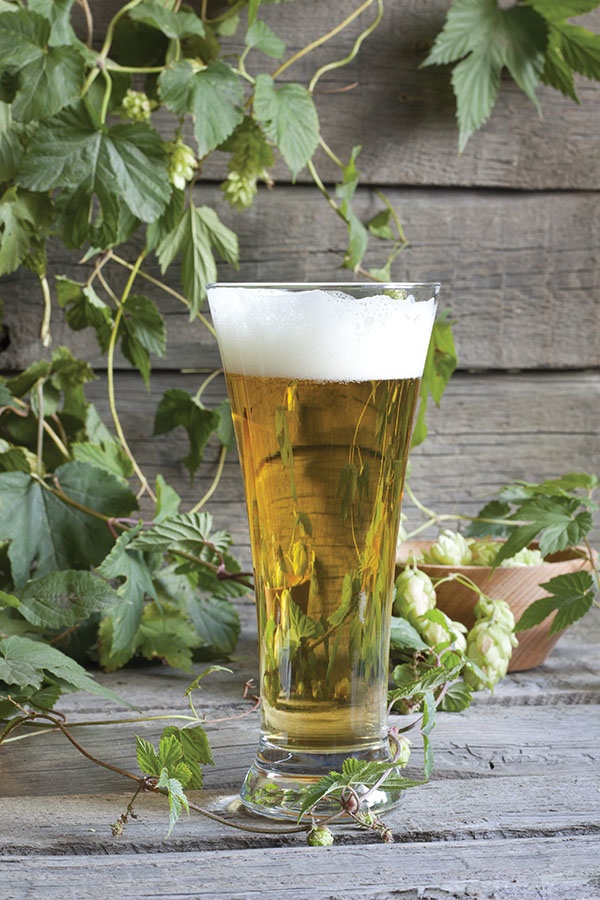
Making your own beer is incredibly cheap per pint, is really fun, and yields very tasty results. This project requires no special equipment; youll probably find everything you need already in your kitchen. If you like the process, a whole new world will open upyoull find a new appreciation for small-batch beers, and you may decide that you want to play with the many different flavors that you can get from home brewing.
We live in Portland, Oregon, which boasts more brewpubs per capita than anywhere else in the world and more varieties of small-scale brews than anywhere else in the United States. Given that my husband and I both really enjoy beer and making our own products, it seems almost inevitable that he would eventually take up brewing. He began with extractssort of a ready-made kit to brew with. Because hes a foodie as well and has a highly developed sense of taste, he moved into whole-grain batches, learning about the subtle nuances that come with having more control over the process and that also yield a more interesting product.
The following is my husbands version of a small-scale batch, which is made without any equipment fancier than what you already have in your kitchen. Ingredients can be bought at a home-brew supply store or from an online supplier. Have your brew shop grind the malt for you; if ordering online, make sure that the supplier grinds the malt and doesnt just ship whole grains.
Materials/Ingredients:
Large bowl for mash
Colander or large strainer
Food thermometer
Large spoon
Two large pots
Funnel
Two 2-liter soda bottles
1 pound American 2-row pale malt
pound (12 ounces) Maris Otter or British 2-row malt
pound (4 ounces) medium crystal malt
1 ounce Fuggles (hops)
1 packet Muntons brewing yeast
Carbonation tablets
Water
Ice
Step 1: Pour the malt grains into the bowl and mix them together. In a large pot, heat 2 quarts of water to 170 degrees Fahrenheit and pour it into the grain mixture. This is your mash . Stir it well, cover it, and let it sit for an hour. During this hour, stir it several times to keep the temperature relatively even throughout. Check the temperature periodically to maintain it at 145150 degrees Fahrenheit.
Step 2: Near the end of the hour, heat another gallon of water to 175 degrees Fahrenheit and pour a couple of cups into the mash.
Step 3: Place your colander (or large strainer) over the other large pot. Spoon the mash into the colander. Gently pour the water from the mash over the grains, followed by the rest of the gallon of water you just heated. Pour the water over a large spoon so the water splashes over the surface of the grains rather than boring a hole in one spot. You want to rinse as much of the sugar and flavor off of the grains as possible to make a tea called sweet wort . This wort is the basis of the beer in that it contains the foods that the yeast will convert to alcohol and CO2 as well as the compounds that form the flavors of your beer. Once youve used all of the water to rinse the grains, you are done with the grains and can use them for muffins, dog biscuits, bird feed, or whatever you like.
Step 4: Bring the sweet wort to a boil on the stove. You may need to add 1 or 2 cups of water to increase the total volume to about 2 gallons at the start of the boil.
Step 5: Once the wort begins to boil, add half an ounce of hops. Boil vigorously, uncovered, for thirty minutes, and then add another quarter ounce of hops. Continue boiling for another twenty-five minutes and then add the rest of the hops. Boil for five more minutes and then remove the wort from the heat. Total boil time is sixty minutes.
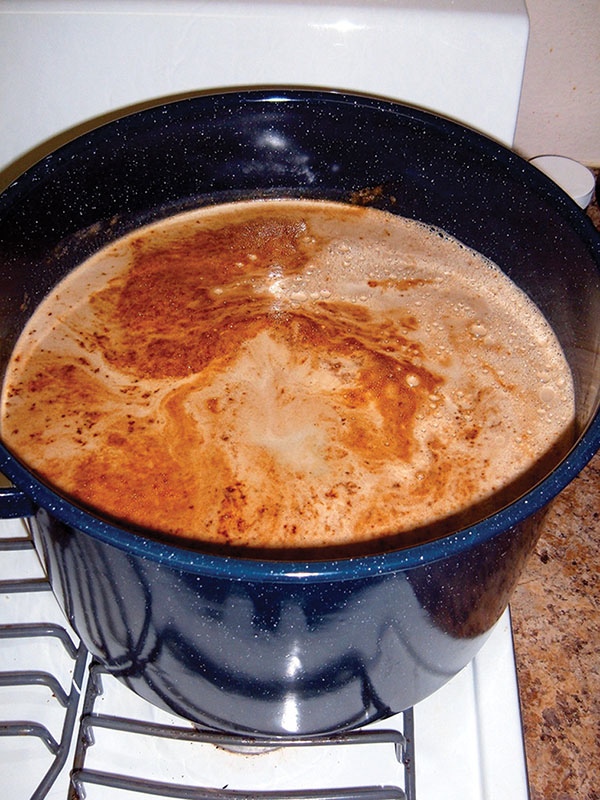
Boil the wort for thirty minutes after adding the hops.
Step 6: Follow the directions on the yeast packet to rehydrate the yeast. This is the same process that you use when making breadadding the dry yeast to a bit of warm water to revive the yeast so it is ready to go to work in your beer.
Step 7: While the yeast is hydrating, place the big pot of hot wort in your sink in an ice bath. Stir the wort to cool it quickly to about 70 degrees Fahrenheit.
Step 8: Pour the cooled wort through your strainer to remove the hops. Dont worry if the liquid has some particles of hops left in it; these will settle out during fermentation.
Step 9: To the cooled and filtered wort, add about half of the hydrated yeast (one packet is enough to make 5 gallons of beer), and stir vigorously to mix the yeast and aerate the wort.
Step 10: Cover the pot with plastic wrap and a layer of aluminum foil and then place the pot in a closet or another dark area with a consistent temperature of 68 degrees Fahrenheit. As the yeast goes to work, it creates CO2 that will push its way out of the plastic wrap; this is desirable. The wrap is mainly to keep air and airborne impurities out. The pressure inside the pot will let gas out and keep the baddies from getting in, and the foil assists in keeping the plastic wrap in place.
Step 11: Wait three to five days for the yeast to be done. Youll see no more bubbles on the surface of the wort (now beer!), and the yeast will be settling down to the bottom of the pot. I like to brew on a Sunday so I can move to the next step on the following Saturday; this always allows enough time for fermentation to complete and the yeast to settle.
Step 12: Sanitize the bottles with a diluted bleach solution of to capful of bleach to a full 2-liter bottle of water. Let the solution sit in the bottles for ten minutes and then empty and rinse them with hot water. Pour one of the bottles out through your funnel to sanitize it, too.
Step 13: Add three or four carbonation tablets to each sanitized bottle.
Step 14: Fill the bottles with your beer by ladling it into the funnel. Try not to disturb the layer of yeast that has accumulated on the bottom of your fermentation pot.
Next page
